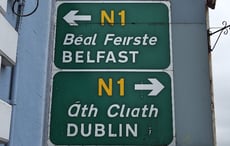Aer Lingus, facing a likely $145 million loss in 2009 mainly because of fuel prices, is targeting areas of operation where it can make stringent cost-saving measures.
Trans-Atlantic routes could be for the axe, at least on a temporary basis.
Already the company has decided to suspend its Dublin to Los Angeles flights this winter and to cut three short-haul services within Europe.
The company has, however, hotly denied rumors that the trans-Atlantic flights from Shannon will be affected in the near future.
Chief Executive Dermot Mannion warned last Friday that, with weak consumer demand also a burden on resources, the airline plans a "fundamental root-and-branch review" of all costs in an attempt to return to profitability.
While he did not spell out what cuts will be sought, informed industry sources reckoned the company may seek to trim overheads by up to $150 million a year, a move that would inevitably include reduction of the 4,000-strong workforce and a radical shake-up in work practices and rates of pay.
One senior executive commented, "The days of scratching around for $20 million here or $20 million there are over. This has to be a major cost-cutting program."
Mannion, who expects to put proposals to staff later this month, said, "Everything is up for review."
Unions said they will await the proposals before passing judgment on them, but they pointed out that they have already made sacrifices and accepted changes that contributed savings worth $29 million a year to the airline.
A similar amount has been trimmed from the annual aircraft maintenance bill.
Mannion's stark belt-tightening warning followed publication of half-year results, showing Aer Lingus made a loss of $29.3 million in the first six months of this year. Mannion expected the company to, at best, break even in the traditionally busier second half of the year.
Analysts warned that the airline could end up recording losses for the full year of up to $43.5 million.
Aer Lingus carried 4.86 million passengers in the first six months of this year, up 10.5 percent on the same period of 2007.
Revenues rose by 10.2 percent to $918 million, although the increase was virtually wiped out by the rise in the fuel bill.
Cost of the average fare fell by 2.6 percent to $160 as a result of strong price competition, but still the number of seats filled on each aircraft declined five points to 70.2 percent.
Ryanair, the largest shareholder in Aer Lingus, seized on the national carrier's half-yearly figures to claim they were proof that Ryanair's attempted takeover two years ago was the right strategy for both companies even though the bid failed.
Ryanair spokesman Stephen McNamara said, "Ryanair promised to reduce Aer Lingus' fares, scrap Aer Lingus's fuel surcharges and reduce Aer Lingus' costs in order to secure the future of Aer Lingus.
"Aer Lingus is being marginalized on the sidelines of European aviation, losing money, with no apparent strategy."
Coincidentally, the person who will head up Aer Lingus' cost-cutting operation is chief financial officer Sean Coyle, who joined the company less than a month ago from Ryanair where he was in charge of route selection and profitability.
When he moved his old boss, Ryanair's Michael O'Leary remarked, "We are pleased to see Aer Lingus recruit some decent management and hope that Sean will introduce some of the changes we have been calling for in Aer Lingus."




Comments